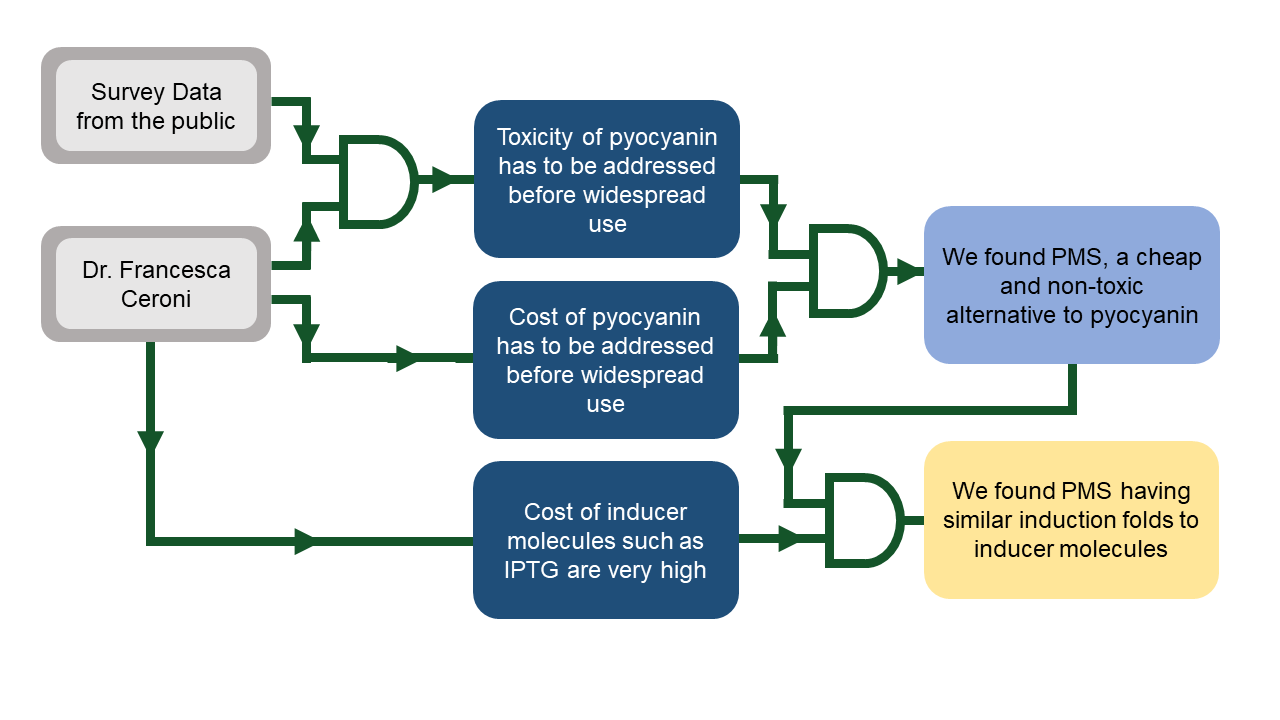Integrated HP

Summary of Integrated Human Practices
Making our technology safer

Toxicity comparison between Pyocyanin and PMS
The 2012 OSHA Hazard Communication Standard ranks hazard ratings with the use of categories, with Category 0 being the lowest risk and Category 4 being the highest. With regards to toxicity, pyocyanin is a Category 4 substance (Santa Cruz Biotechnology, 2010) and extreme care was taken during our wet lab experiments to ensure our own safety and any contact with pyocyanin would warrant immediate medical attention. PMS on the other hand is a Category 0 substance (Santa Cruz Biotechnology, 2017) and thus is far easier and safer to handle.Cost comparison between PMS and common inducer molecules
A cursory look at the costs of PMS, pyocyanin and common inducer molecules (such as IPTG) already reveals stark differences in costs per gram. When accounting for working concentrations, this difference is further magnified, with PMS being 407 times cheaper than IPTG and 6600 times cheaper than pyocyanin. These costs are summarized in a table below, where costs per gram are obtained using the lowest price per gram on Sigma-Aldrich. However, costs only matter if it can be shown that PMS can have a similar fold induction to common inducer molecules such as IPTG and experimental results for fold induction suggesting that this is indeed the case can be found below.| Inducer | Working Concentrations | Price per gram (£) | Mass per liter of media (mg) | Price per liter of media (pence) | CAS No. | Relative price to PMS (%) | References |
|---|---|---|---|---|---|---|---|
| PMS | 0.2 uM | 15.76 | 0.0613 | 0.0966 | 299-11-6 | 100 | Experimental Data |
| Pyocyanin | 2.5 uM | 12,120 | 0.526 | 638 | 85-66-5 | 660,000 | Experimental Data |
| IPTG | 40 uM | 41.2 | 9.53 | 39.3 | 367-93-1 | 40,700 | (NEB, 2018) |
| Arabinose | 6.66 M | 0.785 | 1000 | 78.5 | 5328-37-0 | 81,300 | (Spadiut et. al., 2010) |
| aTc | 0.214 uM | 1650 | 0.0991 | 16.4 | 13803-65-1 | 17,000 | (Nallamsetty and Waugh, 2007) |

Environment
Biocontainment


Fabric Bioprinter

Wellbeing














